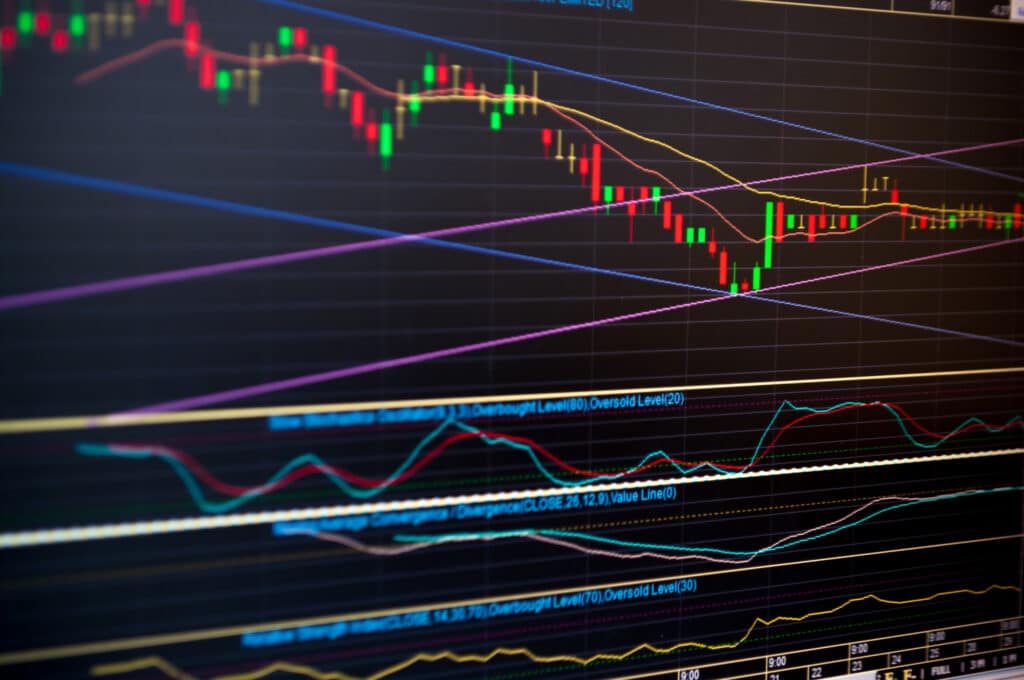When an asset enters its bear phase, analysts predict further decrease, which turns a potentially profitable situation into pure gloom and doom. If investors wait too long, they might miss an early rally. Similarly, if investors call too early, they might face substantial losses in try of buying the dip. Pulling the trigger on a bear market can be challenging.
However, building the courage to hold on to a downtrend is the differentiating point between a profitable trade and a missed out opportunity. Thankfully, the relative strength index is a key indicator for the bitcoin bear trend, providing the necessary information for bitcoin traders to make a profitable turn.
What Is the Relative Strength Indicator (RSI)?
The RSI is a crucial indicator in technical analysis. It evaluates the magnitude of recent price changes to determine the oversold and overbought state of an asset. The RSI is a key indicator that makes buying the dip easier. It displays as an oscillator that ranges between two extremes, 0 – 100.
Rsi readings hold different meanings when they are close to their extremes. For instance, if the rating is 70, it means an asset is overbought or overvalued. As a result, that particular asset will undergo a reversal or collective pullback in price. An RSI reading of 30 indicates that an asset is oversold or undervalued. The particular asset will experience a spike in its price.

Extreme Oversold Levels of RSI Help In Buying The Dip
In December 2018, bitcoin was valued at $20,000. However, the price quickly dropped, and the market entered a gut-wrenching bear, which resulted in BTC’s price at $3,300. This was the longest bear which came in 5 instances. During the first four dips, the RSI was at 30, which indicates oversold or undervalued. As a result, traders purged their holding at the last minute and sold their bitcoin in a bear market. Therefore, the fifth instance had an RSI rating of 10.50.
At this point, the market was at its lowest, and the bearish trend was near its end. In 2019, the RSI indicator was at 15.04, which came in two instances. The first was in September 2019, which turned out to be a losing trade because the price fell lower in the following week. The decreasing RSI shows that traders should sell their holdings to minimize losses.
In November 2019, the RSI dropped to 22.32. Traders who kept a very tight stop would face a losing trade because the next drop was in December. But these were all insignificant losses unless traders were holding heavy.
On March 12, 2020, the RSI dropped to 15.04, and traders who bought at this point made oversized profits because the BTC surged afterward. The crypto market entered its bull phase, and those who held onto their position from march 12 made tremendous gains as BTC topped out at $64,854 on April 12, 2021.
Investors gained substantial profits because the selling seasons ended. What came next was a price surge because those who hadn’t dipped their toes in bitcoin started buying in bulk.
Bull Divergence Can Help Buying The Dip
RSI is a strong indicator that helps buy the dip. But combining it with other trends can build investors' confidence in holding onto their assets. Bull divergence can warn traders of a potential trend reversal. It happens when the RSI index falls lower than the prices.
Now, the particular asset is being oversold or undervalued, and it'll soon regain its original value. However, undervalued assets gain a boost in most circumstances, and more buyers enter the market. This development occurs when a key asset such as bitcoin falls to a price point that is highly affordable by the market. However, when retail traders enter the crypto market, they tend to slow down the increase.
Retail traders don't play for the long run. Instead, they liquidate their holding at the first sign of a price hike. As this starts to happen more frequently, investment gurus enter the market and buy that particular asset in bulk. As a result, the price increases to an all-time high because they start controlling the value of their assets.
The bull divergence helps understand this shift because the RSI starts falling lower than the actual price; this means the asset is not being oversold. If that were the case, the RSI index and the price would be synonymous.
Instead, the asset is being undervalued. There are more sellers than buyers in the market, and the buying party is controlling the price. When the buyers become corporate investors, they buy in bulk and control the asset price lifting it to its all-time high and then selling at maximum levels.

Key Takeaways
Investment is a risky business, be it real estate or crypt. However, bitcoin has become a profitable investment for many if they hold on to their asset. Bear markets offer the opportunity to buy a valuable asset at discount prices. But it's hard to go against the trend of selling and negative market sentiments. In this situation, the RSI indicator can be of assistance because it shows the magnitude of a trade. But sometimes, RSI can give wrong signals. Therefore, it's best to use bull divergence to spot a potential bull market.
A key point to remember is what goes down must come up. However, no one can predict when this will happen. As a result, the RSI indicator with bull divergence serves as a medium of understanding where the market will shift. Moreover, when an asset is undervalued, buyers will enter the market, and its price will increase.
Finding the right selling opportunity can help you switch from a losing trade to an oversized profit. Nevertheless, bitcoin has seen tremendous ups and downs, and external factors have a strong role in its price. So be wary of the news about bitcoin in the market and adjust our investment strategy accordingly.
The post The Key Indicator That Makes It Easier for Buying the Dip appeared first on Fat Pig Signals.
https://ift.tt/eVnOsdM

Nenhum comentário:
Postar um comentário